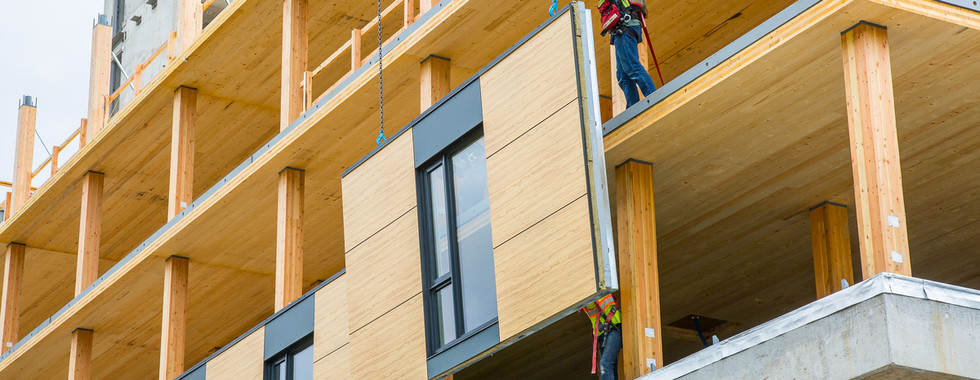What course to choose at university, structural engineering with architecture or civil ?
- Structures Insider

- Aug 18, 2022
- 4 min read
Updated: Sep 24, 2022
Quick Take
Answer 1 by Andrew Johnson
Credentials: B.Sc in Civil Engineering & Structural Engineering, University of New Brunswick Graduated 2009
& Creative Structural Engineer at Johnson Engineering Solution Limited
Depending on where you work, you can do both afterward, however honestly I would choose structural as the solution, as mastering it, with the assistance of others is easier, than mastering architecture afterward. The micro vs macro of building something.
Once you understand that everything is built up of systems and that each system is a connection of nodes of sequences of events with given or variable probabilities it’s useful to understand this, and finite element analysis is where you need to get your brain focused and trained on what works and what doesn’t for different situations, and passing the exam means that you can do the math by hand. By the time of your exam, you’ll be trained to do, it if you are putting your effort into it.
So recommend structural, with lots of English communication and other languages so that you can trace back the origin of each word, their root history provides for an interesting cultural understanding such that different economics of understanding were used, where today we used a more globally refined and, the calling that you are undertaking is important, as once you know wrong and right, sitting back and doing nothing becomes much more difficult. So moving forward and helping those around you be the better version of themselves, is what you're going to be able to help with.
My experience, the youngest 12-year-old, son of two engineers that started a family engineering company. They used some of my college funds to start the company, so I am a shareholder.
Since that point I've worked on resolving building-related problems, typical workload is 40 to 100 ongoing projects in various stages as time management means that they don’t all need answers at one time. So from a real-life point of view, take your university and apply yourself, and find the life tricks that enable you to be better, without short or long-term risk.
Structural engineering is about removing risk, and if you can’t manage it, architecture is about providing a reason to have risk. (You can work both sides of your brain, I think, please refer to an expert for that, I’m not one of the mind or body.)
Hope this helps. (Structural!!!-more math the better, the harder the better, make it easy!) everything worthwhile starts out hard!
Answer 2 by Leo Hopkins
Credentials: BEng in Engineering, The Open UniversityGraduated 2011
That depends on what you want to ultimately do. Architecture is generally based on aesthetics and so if artistry interests you then go for a course that includes that. An architect needs to have a basic grasp of structural engineering so that (s)he is able to design structures in selected materials that conform to safety standards by being within stress/strain tolerances.
However, once an architect had done their bit, the civil engineer will step in to ensure the building is also built safely and on time, and within budget; there may be some overlap of responsibilities between an engineer and a project manager. A civil engineer will also check in on the progress of the building work and take on any reports back from the construction company and act upon construction-in-flight information. If it’s ‘pure engineering’ you’re looking to get into the study of civil engineering & mathematics.
Answer 3 by Steven Thomas
Credentials: BS (Chi Epsilon)in Civil and Environmental Engineering & Structural Engineering, University of Wisconsin - Madison
I tend to agree with the others for the most part. I have heard of a major called Architectural Engineering. I have always considered this to be an oxymoron. I once knew a professor of Architectural Engineering named Dale Perry from U. Texas. He was on the opposite side of a lawsuit that I was part of. His testimony indicated that he was sadly lacking in simple concepts of structural analysis.
The jury seemed to agree. Architects get a lot of credit for the things that are done by structural engineers. This is due to a general misunderstanding among the public of what the two professions do. Most people are unaware that architects are not involved in any aspect of bridge design.
Mastery of structural engineering requires a lot of education in demanding subjects and a great deal of experience in the field. I don’t know the extent to which architects study structural engineering. However, it seems to me that time constraints would require more focus on one than the other.
I have never been involved with a project for which structural engineering was performed by the architect. The more common practice now is for the architect to subcontract the structural engineering to a structural consulting firm. A possible exception would be the prescriptive design requirements in the code which generally do not pertain to major structures.
I think if you’re going to be a structural engineer you should go all in and become familiar with tall building and bridge design among other challenging structures. A Ph.D. in structures is never a bad idea if you can swing it.
My best friend was an architect God bless him. I miss him a lot despite his chosen profession.
To get your question answered, submit it to SI Civil Engineering
👇
What is the difference between structural engineering and civil engineering?
Answer by Haider Ali Credentials: Master's in Structural Engineering, Oklahoma State University
Structural engineering is a branch of civil engineering that specializes in the structural design of various types of structures like buildings, bridges, culverts, tunnels, etc. The main focus of structural engineers is to run analyses of the structures or structural components under consideration and design them to resist the potential loads that will act on them. Generally speaking, there are two objectives that structural engineers need to accomplish with their design.
1. That the structure is safe for use and can withstand the different loads acting on it without collapsing. This is called the strength design of the structure/structural component.
2. The structure is pleasant and comfortable for the people to use/inhabit. For example, making sure that there are no huge cracks (not dangerous but worrisome), and there are no undue vibrations or sway in the buildings which make the inhabitants uncomfortable and make them feel unsafe. This is called the service design.















